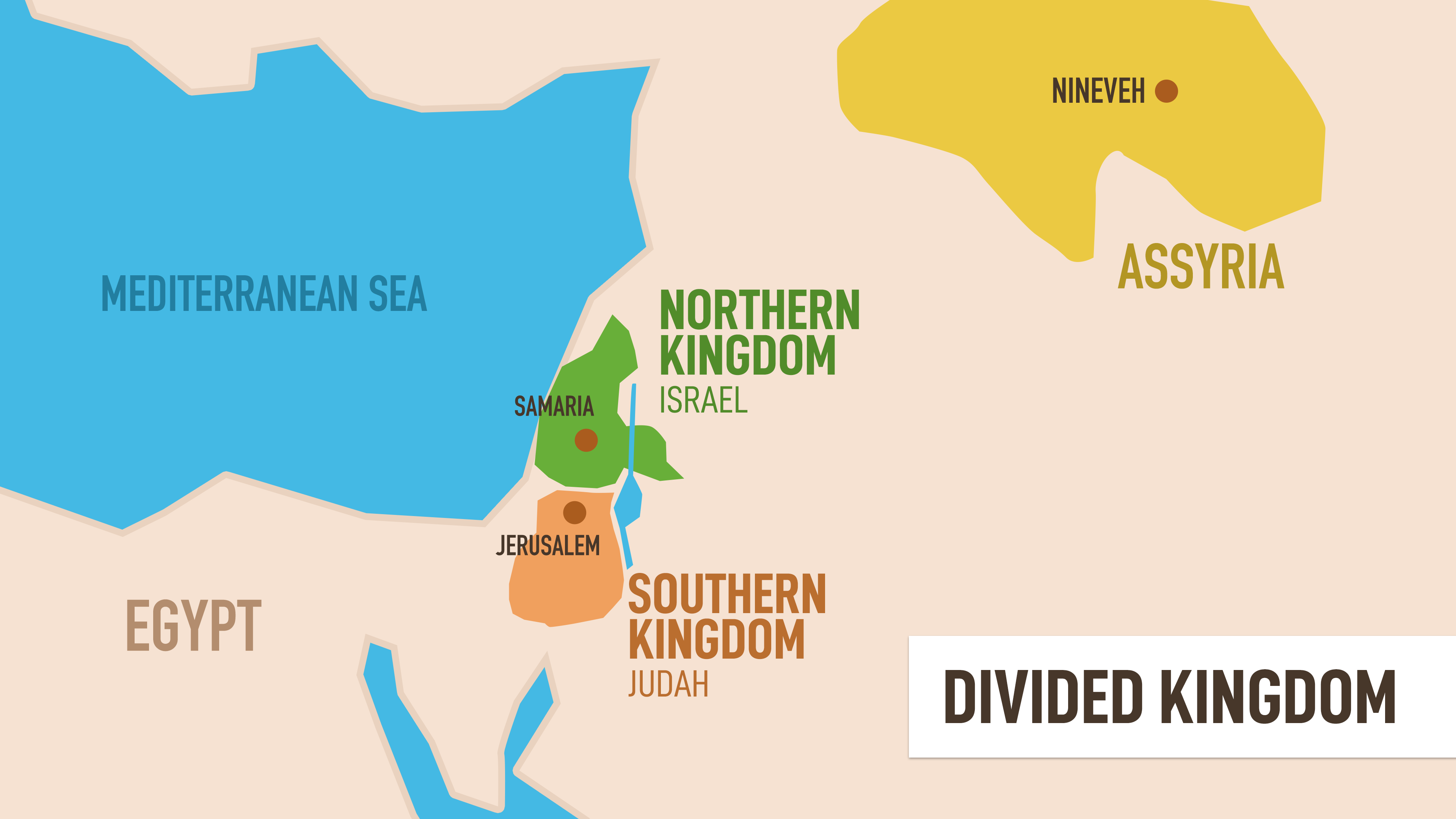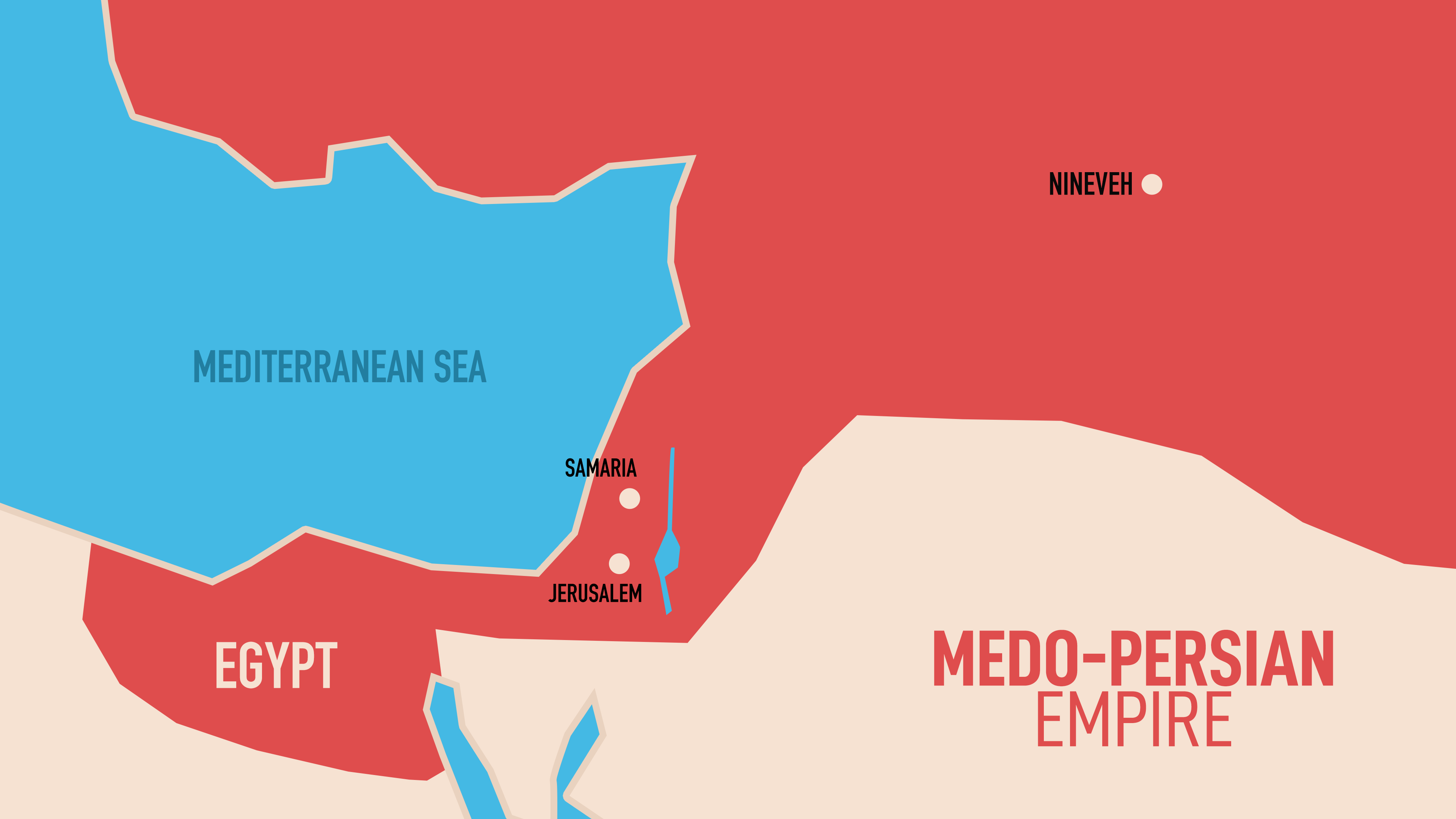Jewish Historical Timeline
In order to better understand the return of the Jews from captivity and how this occurred over a period of 100 years, it would be helpful if we reviewed a timeline of Jewish history from about 1040 B.C., which would be the beginning of the era of the United Kingdom. This period would be approximately 500 years after Moses led the Jews out of Egypt and to the promised land.
During this time the Jews settled in the land given to them by God and were ruled by family and clan leaders from the twelve tribes of Israel. From time to time God would send special spiritual or military leaders like Samuel or Gideon to guide or lead them in battle against their enemies.
By the time we reach roughly 1040 B.C. the people, no longer wanting theocratic leadership, whereby God would lead them directly though the "judges" He raised up and sent to them, demanded to have a king to lead them (an idea they copied from the pagan nations around them).
God permitted Samuel, one of the Judges who had led the people for many years, to anoint for them a king and from this point we begin our timeline.
From Saul to the Exile
Note that the timeline we will be using has four sections:
- The Date – These are approximate dates since there are various opinions over exact years, but the events mentioned are, for the most part, within a year or two (before or after) the event cited.
- The Event – Only major events are included in order to provide the flow of history by noting highlight moments.
- The Prophets/Books – Many times there were several prophets who wrote about the same events since they lived at the same time in history. Listing the prophets and when they lived in the timeline helps clarify their writings and relationship to one another.
- The World – The Bible was produced to maintain a witness and history of God's creation of the world and mankind, but specifically to record the following:
- The sin of Adam and its consequences.
- God's promise of eventual salvation.
- God's plan and fulfillment of the promise from Adam to Noah, to Abraham, to Israel, to Jesus, to the Apostles, to the church, to the return of Jesus, and to eternal life for God's people.
The point to note here is that the Bible is a historical record, but not one of world history; it is a historical record of God's promise of salvation and the fulfillment of that promise through Jesus Christ who appeared on earth, in history, and as a Jewish man. It does, on occasion, mention historical facts, events, and characters, but only as far as these take place during or interact at certain points with the record of God's salvation of mankind.
This doesn't mean that historical information about world events in the Bible is not accurate. The information about world events in the Bible is perfectly accurate, but not of primary importance.
The main story of the Bible is the salvation of mankind, not the history of mankind. With this in mind, let us begin a review of this timeline.
Timeline – 1040 B.C. – 400 B.C.
1. 1040 B.C. Israel
Events - Beginning of the United Kingdom of Israel ruled by one king:
- Saul (1040-1000)
- David (1000-961)
- Solomon (961-922)
Prophets/Books - Beginning of united kingdom where the 12 tribes are now ruled by one king who himself is a servant of and directed by God.
- I & II Samuel
- I Kings 1-11
- I Chronicles
- II Chronicles 1-9
- Psalms
- Proverbs
- Song of Solomon
- Ecclesiastes
World - There were no world events mentioned in our timetable, but the various prophets and chronicles of the period describe numerous interactions and wars with the surrounding nations that existed at that time.
2. 922 B.C. – Divided Kingdom
Solomon's son, Rehoboam, alienates the ten northern tribes with his economic policies and causes a split in the kingdom. He retains the tribe of Judah, largely because his father, King David, was from this tribe and Jerusalem was the seat of power where both the king's palace and the Temple were located.
- The tribe of Benjamin also remains loyal because of its location, which was in the south and the first king, Saul, was from this tribe.
- The ten northern tribes named Jeroboam as their king and the city of Shechem as their capitol.
- Northern tribes kept the name, Israel, and the southern tribes were referred to as the kingdom of Judah.
Books/Prophets - Note that some books like I Kings and II Chronicles are divided, telling the history of both the united and divided kingdoms.
World- The most significant event that will later have a great impact on both kingdoms is the rise of Assyria to the north as a world power.

3. 722 B.C
These books also tell the story of the various kings for both north and south, whose rule overlapped.
- North (Israel) - 20 kings
- South (Judah) - 20 kings
Books/Prophets
- Jonah
- Joel
- Isaiah
- Amos
- Hosea
- Micah
The Lord also sent several prophets to each nation to both warn and encourage them over a period of two centuries.
World – Many scholars place the prophet Jonah's preaching at this point in history. Nineveh, the capital of Assyria, is spared by Jonah's preaching.
4. 721 B.C.
Assyria, under King Sargon and later his son, Sennacherib, conquered the northern kingdom and relocated the people throughout the Assyrian Empire in order to assimilate them. The people who were carried out were eventually referred to as the ten lost tribes.
Books/Prophets
- Obadiah
- Zephaniah
- Nahum
- Habakkuk
World
- Israel is carried off into different foreign lands by Assyria
- Assyria is destroyed by Babylonians
- Babylonian Empire is established
5. 587 B.C.
Events
- Fall of Jerusalem and Southern Kingdom to Nebuchadnezzar Il of Babylon
- 70 years of captivity
Books/Prophets
- Jeremiah
- Lamentations
- Ezekiel
- Daniel
There begins to be longer term prophecies concerning the kingdom of God (church) and the coming of the Savior in a historical context (Daniel).
World – Once the Babylonians are defeated and the Medo-Persian empire is established, the scene is set for the portion of Jewish history that this study will examine. We are looking at a small remnant of people from the southern kingdom of Judah who returned from exile to their original home in Jerusalem. Through God's mercy and care, a fraction of the original Jewish kingdom (Judah) was preserved in order to serve in the fulfillment of His promise of salvation originally made to Adam and Eve which was recorded in the book of Genesis.

From Captivity to Christ
The period that describes the return of the Jews from captivity covers about 100 years. This return and rebuilding was done in stages.
1. Return Under Cyrus – 538 B.C.
Little is said of this except in Ezra's book. The objective was to rehabilitate the land, rebuild the city and the Temple. The first Jewish leader chosen was Sheshbazzar (Ezra 1:8).
This group established the cities and laid the foundation of the Temple, but opposition to the work caused a 16 year delay. The building progress was revisited after the prophet Haggai exhorted the people to leave off building their own homes and vineyards, and return to the rebuilding of the temple.
2. Return Under Darius – 516 B.C.
The objective here was to complete the building of the Temple itself and the life that revolved around it. This effort was led by Zerubbabel and Jeshua.
- Zerubbabel had originally come with Sheshbazzar and became the leader of this renewed effort to complete the Temple. He was the grandson of King Jehoiachin, King of Judah, who was released from prison and allowed to be at the Babylonian King's table.
- Jeshua was the head of the household of priests. This renewed effort to complete the Temple was also opposed, but with the encouragement of the prophets Haggai and Zechariah, the work was completed.
3. Ezra – Appointed priests and the people - 457 B.C.
King Artaxerxes appoints Ezra who then reinstates the teaching of the Law.
4. Return Under Artaxerxes I - 445 B.C.
This group was led by Nehemiah for the purpose of rebuilding the protective wall around Jerusalem and also re-establishing social order. It is here that the story of Nehemiah and Ezra cross.
- Nehemiah was a cupbearer to the king, a privileged position in the royal court. There is no mention of a wife so many scholars believe that he was a eunuch. He rebuilds the walls, establishes social order and is named governor. He returns to Persia for a time but is called back to Jerusalem to reestablish the previous order . The theme for this study is "Rise up and Build" and comes from chapter 2:18 of his book.
- Ezra was a priest responsible for Jewish affairs in the nation on behalf of the Persian court. He appears several times in the account of the Jews' return to their country. Ezra reestablished the proper functioning of the Temple, authenticated the priestly lineage, dedicated the wall around the city of Jerusalem, and when he was finished he also reestablished the reading, copying, and teaching of the Law.
In these accounts we see the process of God's people being gradually returned to their country over a period of a century.
- The land is refurbished.
- The cities rebuilt and inhabited.
- The Temple and wall of the central city of Jerusalem are rebuilt.
- In addition to this, social reforms are established to create peace and harmony.
- Finally, the central focus of the people (the worship of God) is reestablished through a renewed priesthood and temple service.
5. 400 B.C.
Events
- Greek domination of Judea
- Ruled by Ptolemy of Egypt
- Maccabean revolt
- Jesus Christ is born
The last period (400 BC to Christ) sees the rise of the Greek empire, which is subsequently conquered by the Roman empire, the nation in power when Jesus is born.
One important thing to note about this roughly 600 years of Jewish history from Saul's reign as first king, through the 40 kings of the divided kingdom, to Nehemiah's return and Ezra's work in reestablishing the people's "religious life":
In every case, whether the king was good or bad, faithful or idolatrous, through wars and prosperity, divided allegiance and moments of spiritual glory – God was always ministering to His people.
He blessed them, disciplined them, prospered them and gave them victory. He deposed their kings, sent armies to frighten and defeat them, rescued them from impossible odds, gave them periods of peace and prosperity, warned them, pleaded with them, He dwelt among them and then sent them to dwell among foreign nations. But in all of this there was one constant – He was always a part of their lives, and for those who, despite their failings and weaknesses, remained faithful to Him – He never let them go!
The lessons we will share in this series have this as a recurring theme; God is with His people, and if His people rise to build, He will be with them at every stage. With this in mind, we'll next look at the book of Ezra and note how God stirred up the hearts of those who would eventually re-build the Temple, the city and the nation of God's people.



